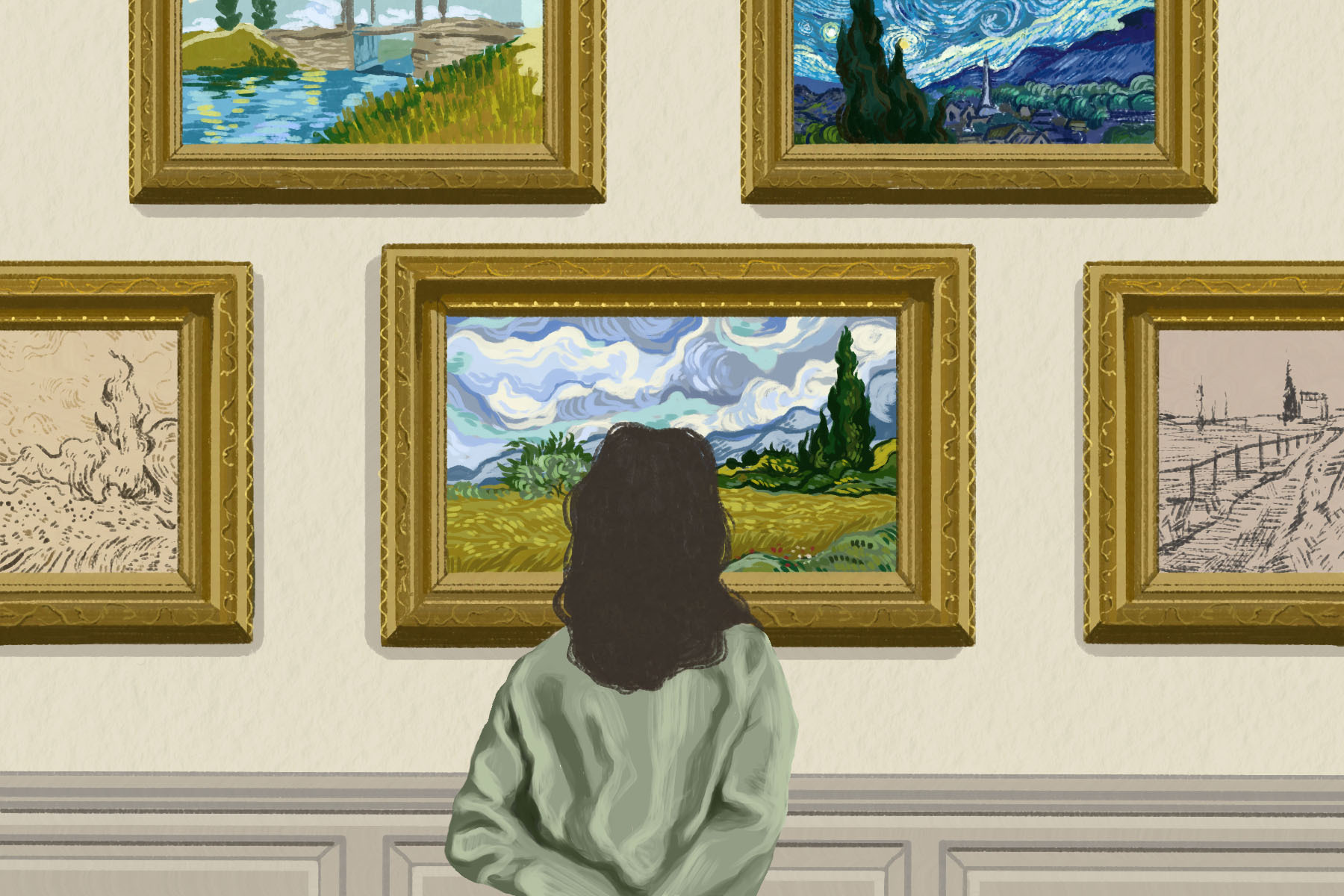A new exhibition at the Metropolitan Museum of Art titled “Van Gogh’s Cypresses” examines the eminent Dutch painter’s work via his signature cypress motif. The exhibit explores the dynamic and expressive power of Van Gogh’s art by guiding viewers through the evolution of his efforts to capture a single form: the wavy green cypress tree. Unlike other recent Van Gogh exhibitions, such as the “Immersive Van Gogh” digital art installation, the Met’s thematic collection provides visitors with an intimate, face-to-face view of his original masterpieces.
A quote from Van Gogh himself encapsulates the Met’s motivation for curating this exhibit: “The cypresses still preoccupy me … because it astonishes me that no one has yet done them as I see them.” Enshrined in art history by Van Gogh, cypress trees personify death and immortality. However, Van Gogh also believed the trees were emblematic of southern France’s natural landscape, which he loved to immortalize in his art.
Van Gogh produced the paintings and drawings from this collection during the final years of his life — roughly February 1888 to May 1890. The exhibition divides his time in southern France into three sections. The first period (February 1888-May 1889) consists of his stay in the town of Arles; the second (May-September 1889) and third (October 1889-May 1890) periods span his time at an asylum in Saint-Rémy. During Van Gogh’s final years, his cypresses migrated from the background of his initial paintings to the center foreground of his later paintings.
Van Gogh’s May 1888 oil painting titled “Drawbridge” exemplifies his early depiction of the green cypress tree. The painting focuses on a lonely woman holding an umbrella as she strolls across the Langlois Bridge at Arles. Her distant figure underscores the grandeur of the natural landscape. A magnificent blue sky and rippling waters lie in stark contrast with the structured depth of the central bridge structure. The all-important cypress trees stand to the left of the bridge — their static and pointed shapes are mere afterthoughts amid the impressive landscape.
Other highlights from the first period of the exhibition include the paintings “Orchard Bordered by Cypresses” and “Landscape under Turbulent Skies.” Van Gogh’s paintings and drawings of Arles from February 1888 to May 1889 are integral to his portrayal of the Provençal countryside. However, his most evocative depictions of the cypresses were yet to come.
In May 1889, Van Gogh moved into the asylum at Saint-Rémy. His doctors placed him in a secluded room in the former monastery. Although he had few supplies and limited access to the great countryside at the asylum, Van Gogh would create his most remarkable and lasting images of the cypress tree in a sequestered room in Saint-Rémy. “The Starry Night,” the most famous painting he created during the second period of his career, features the dark green figure of a cypress tree juxtaposed against the swirling night sky.
However, the great technique Van Gogh used to capture this swirling movement, impasto, is best illustrated by another oil painting he made during this period: “Wheat Field with Cypresses.” Impasto, the Italian word for “mixture,” is a technique where paint is laid thickly on a canvas to render the brushstrokes more visible. The result is a wave-like pattern of brushstrokes that places a composition in perpetual movement. In “Wheat Field with Cypresses,” evidence of the impasto technique appears in the swirling wheat field, which comprises thick dabs of paint that visibly pop off of the canvas. Layered with light and dark greens, the tall cypress tree on the right side of the painting also consists of distinctly visible brushstrokes. In contrast to the shadowy wonder of “The Starry Night,” Van Gogh uses bright colors to limn an expansive daytime view of the southern French countryside.
The third section of this exhibition encompasses the final period of Van Gogh’s career. Near the end of his life, Van Gogh’s cypresses faded once again into the background of his compositions. This change is evident in his oil painting “Window in the Studio.” The golden yellow walls of his studio dominate the entire canvas, so the cypress trees exist only within Van Gogh’s recreations of his past paintings. On the right wall of his studio hangs the oil painting “Trees in the Garden of the Asylum,” its flamelike cypress trees just barely visible. The actual painting is located directly beside “Window in the Studio” at the Met exhibition. Since a forest dominates the entire canvas, Van Gogh highlights the wavy cypress with red accents to differentiate it from the other trees. Although Van Gogh still valued the cypress motif, the tree did not dominate his creative output to the extent that it did during the vibrant summer of 1889.
The Met’s exhibit commemorates Vincent van Gogh’s artistic career through one of his most celebrated visual motifs. Furthermore, the installation provides people a rare opportunity to see a large collection of his works in their original forms. While the “Immersive Van Gogh” experience is valuable in that it enables people to view the artist’s work through a novel medium, the digital exhibit cannot match the splendor of seeing the original canvases. The paintings inspire wonder, sorrow and joy that video projections cannot fully capture.
This exhibition at the Metropolitan Museum of Art in New York City is on display until Aug. 27, 2023.

















In color block jam, your mission is to send colored blocks to their matching doors and watch them disappear in a satisfying burst!